Welcome to Friday Artist Features! Every Friday we feature an artist whose work often includes themes of urbanism and mobility.
This week we are featuring Berlin-based illustrator Carlo Stanga.
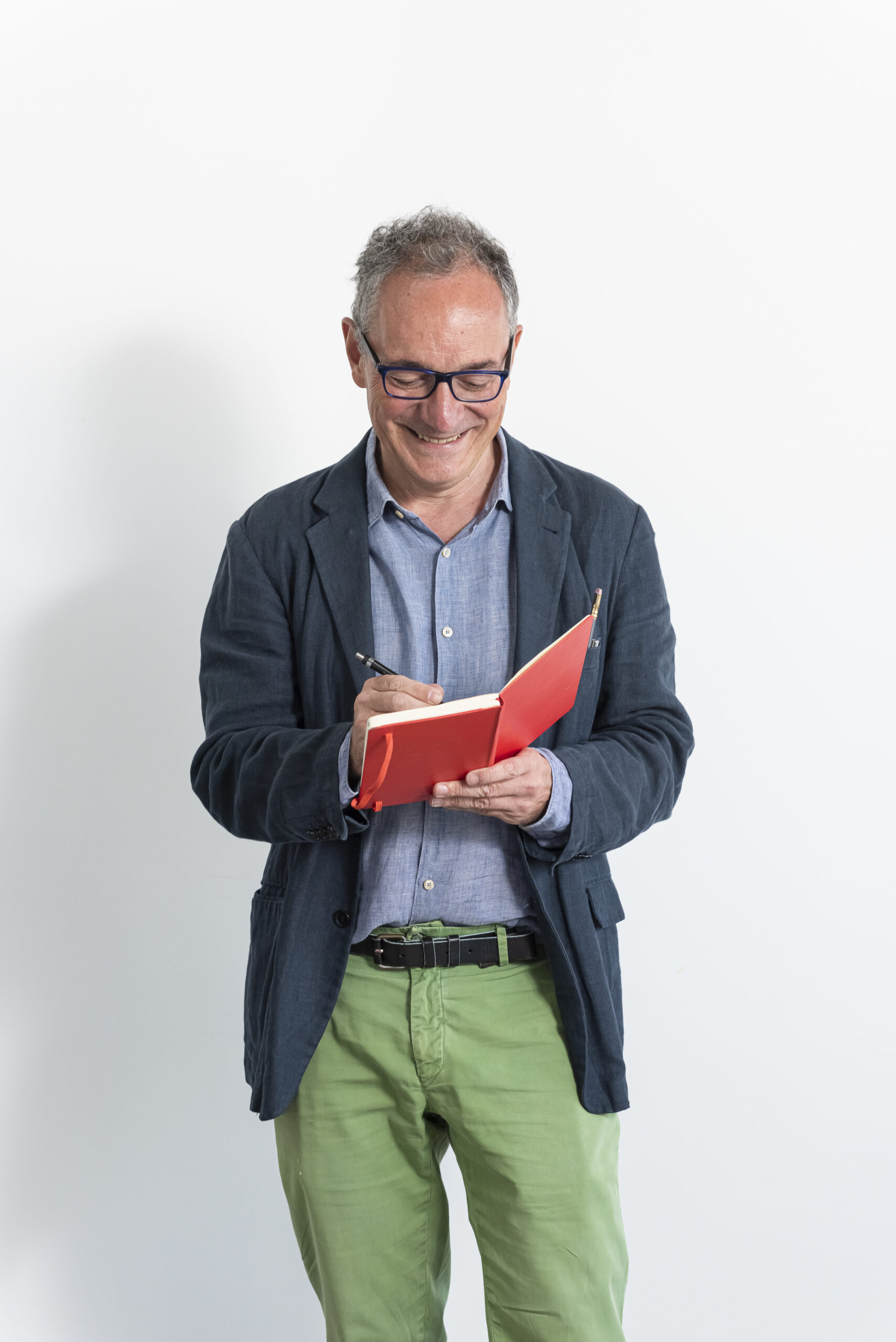
Born in Italy, Carlo has been always deeply passionate about drawing. After graduating in Architecture at the Polytechnic of Milan, he chose to further his education by attending art and design studies. He collaborated with the premier Italian designer Bruno Munari, an amazing experience that influenced his way to see the world.
As an editorial and advertising illustrator, Carlo works with major Italian magazines and newspapers and with international clients in Europe and in the U.S.
His distinctive style continually wins Italian Illustration awards and the work has been selected by The American Illustration Annual and won the Gold Medal Award in Creative Quarterly’s #15contest and Awards of Excellence from Communication Arts.
In 2015 he wrote and illustrated I am Milan, followed by I am London and I am New York the first title of a new book collection, published by Moleskine, dedicated to the main cities of the world.
In 2021 he created his first children illustrations for the book ” Zaha Hadid”, written by Eloisa Guarracino, published by Raum Italic, Berlin and Maxxi, Rome.
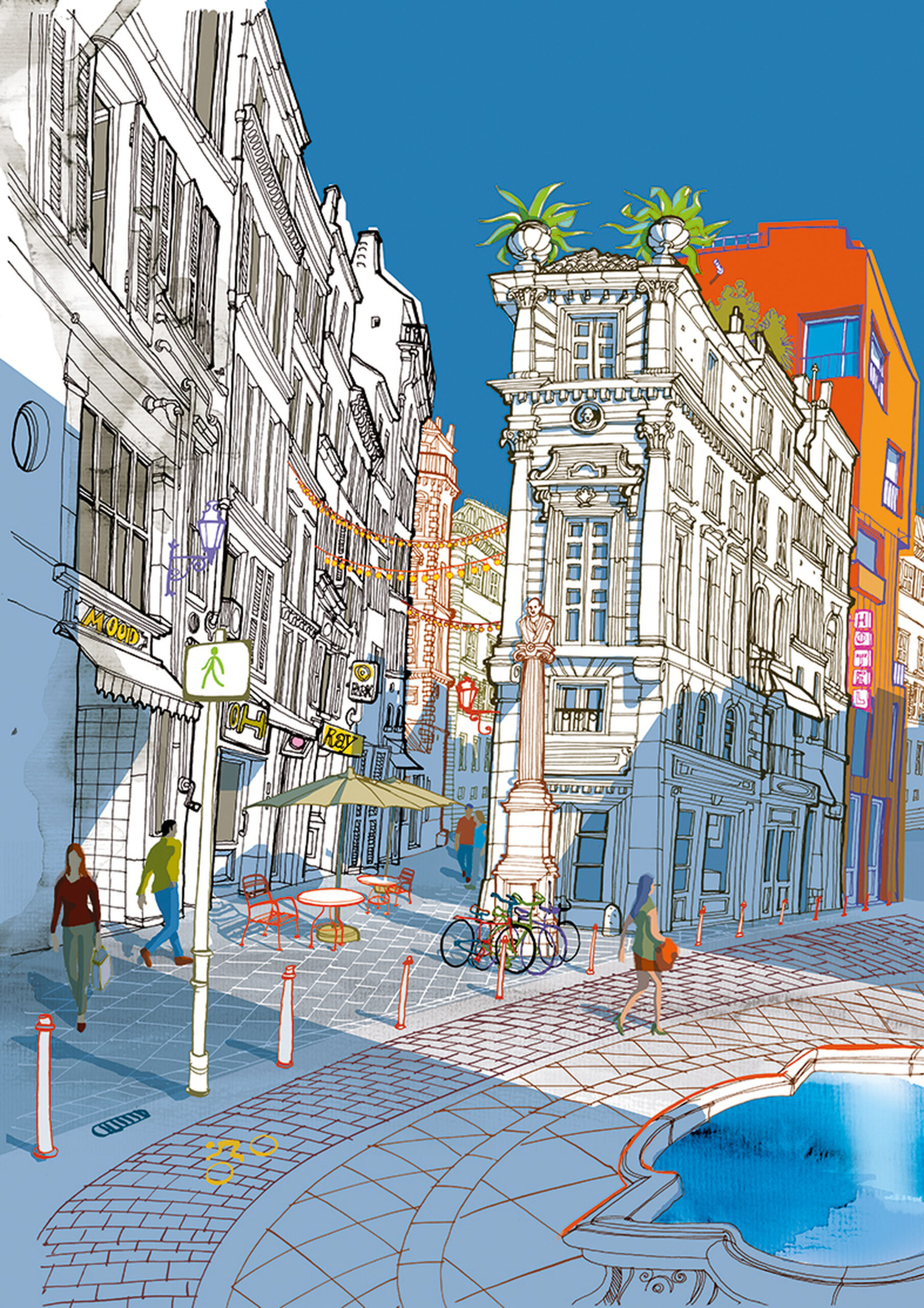
https://www.carlostanga.com/
“…walking of course is very important for me in order to discover the town in all its hidden and precious places. The quality of life is rising as soon as you walk or ride a bike. Berlin gave me the possibility to do this in a very green and alive environment. I am so relaxed and happy with walking in my home city, it provides me a special and always flowing inspiration for my artistic work!“
Carlo on walking around Berlin
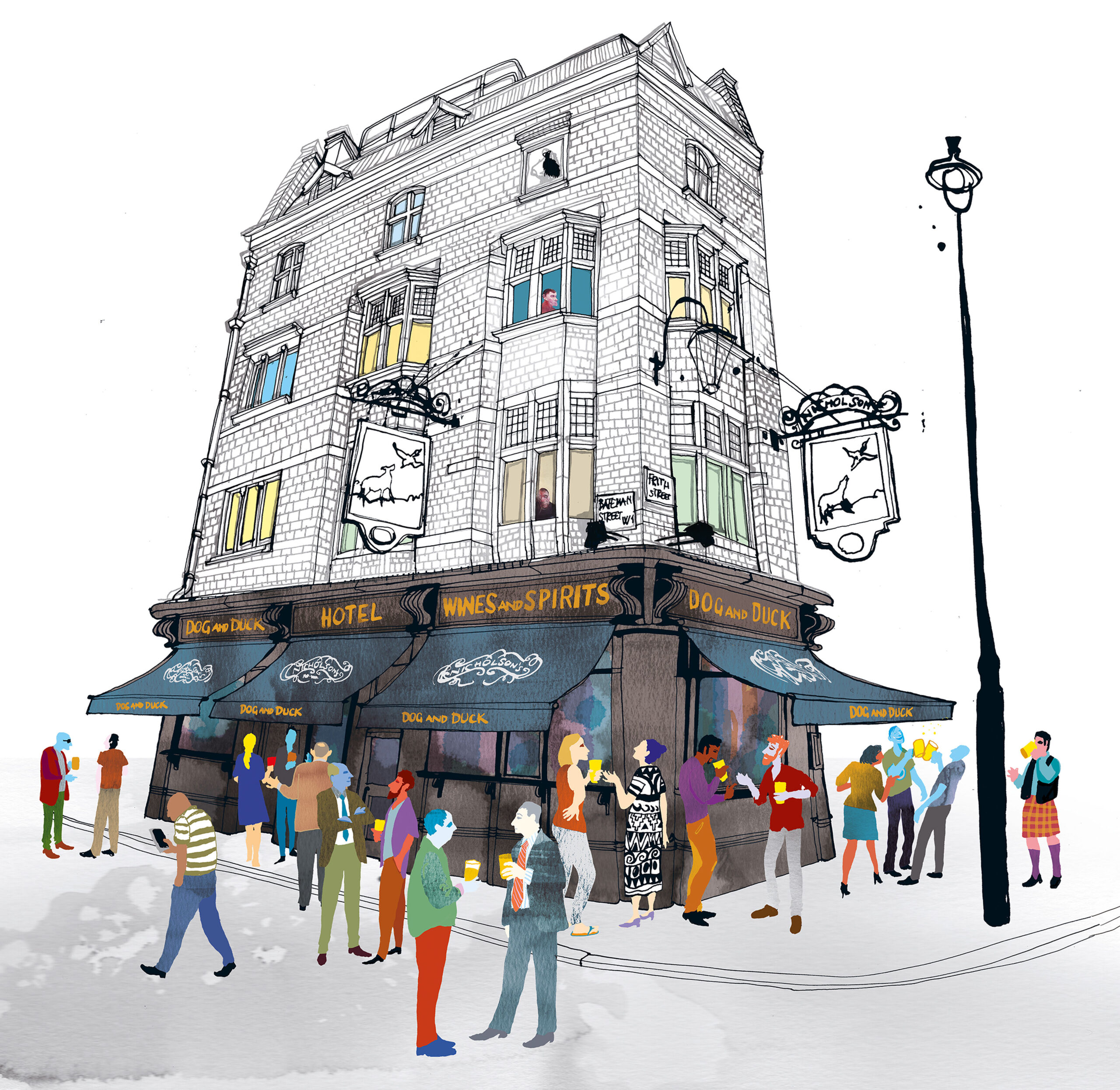
https://www.carlostanga.com/
Pedestrian Space: How does urbanism influence your work?
Carlo: I have been always very interested in cities and urbanscapes. My first drawings during my childhood were focused on buildings and city environment, especially the big metropolis.
Later I graduated in architecture at the Polytechnic of Milan and urbanism became something familiar and inspiring. In fact, I followed urban planning courses and took part in urban projects. At the same time, I improved and deepened my interest in illustrating cities.
Now urbanism is at the center of my work and living in a big city like Berlin, I am always traveling and visiting many urban environments which provides continuous inspiration. I am particularly struck by the quality of the building materials in every single city, the presence of greenery and water, the diversity of people and architecture, the sense of freedom, the intensity of light and shadows, many different impressions that can invite me to draw.
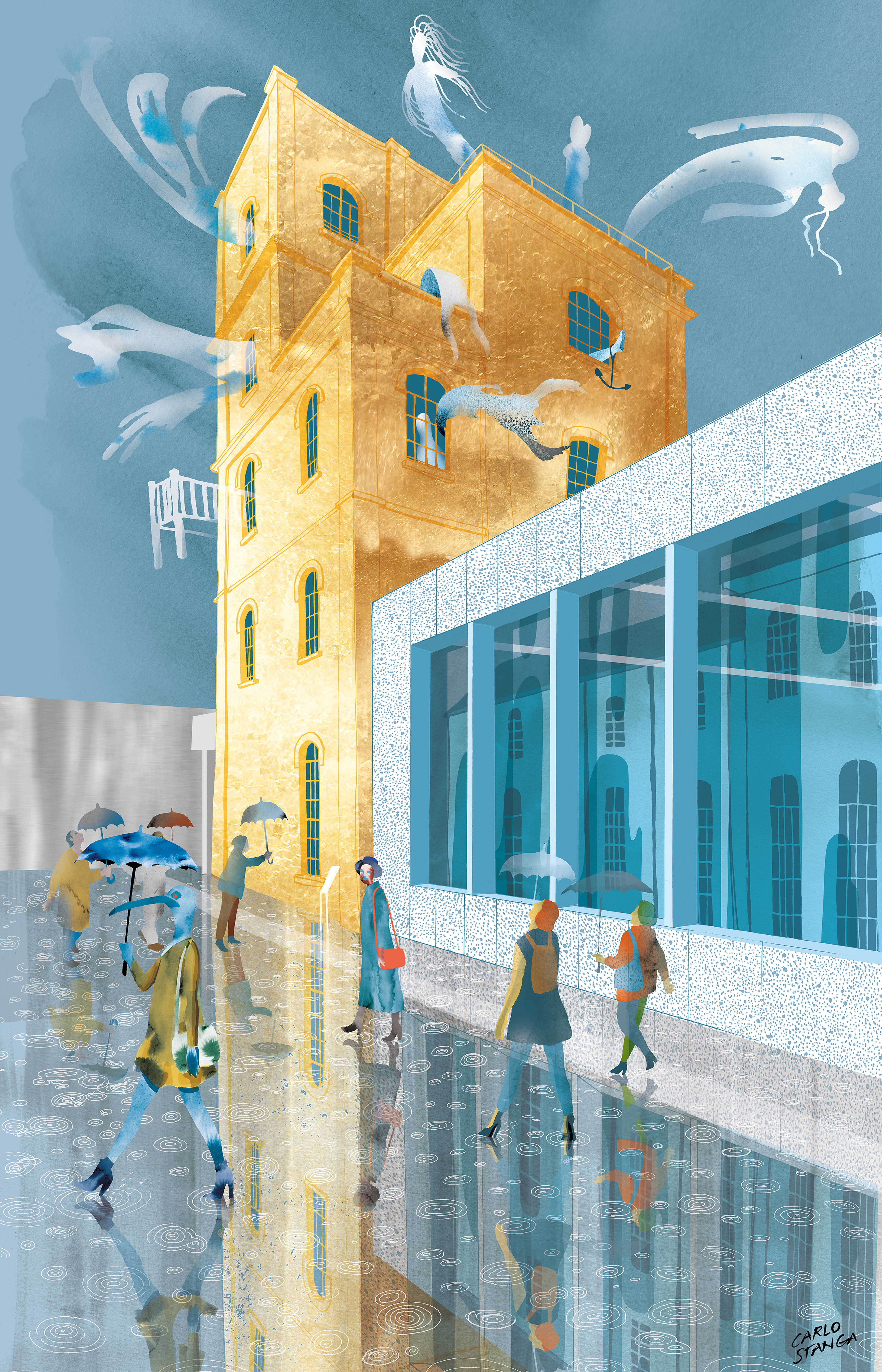
https://www.carlostanga.com/
Pedestrian Space: Your distinctive style is a result of your background in both architecture and art and design studies. But there is more- the ‘spirit of the illustrations which is more deeply matter of your vision and style. How did you witness your own style emerge over time?
Carlo: At the very beginning I was not aware of my style, or as I prefer to say, of my language. Everything was proceeding in a very quiet and natural way and every new drawing was like an experiment. Later, when I realized that people were willing to pay me for my artwork, illustration became a real job for me and I started considering more seriously my language. In fact, as an illustrator and an artist, having a unique and recognizable language, is absolutely crucial.
“…when I approach a city and try to figure out how this city is as a person, it is because my main goal, when I draw, is to find the real personality and identity of this urban-person.”
Carlo on depicting cities as people & characters

Pedestrian Space: What mediums do you work with?
Carlo: I use a hybrid kind of method, that I teach in my online course at Domestika, between analog and digital.
As I was born in an analog time. I still draw directly with pencil or a Rotring rapidograph, a typical tool for pre-digital architects. I love feeling the relation between the pen and the paper and my hand runs in a better, more comfortable way. After creating the drawing in the analog world I scan everything to pass to the digital world, in order to create a file. It is very important for me to produce a high resolution file, to maintain a good quality and have a future possibility to print it on a large size without losing definition. For example, I can create a book illustration and someone, for example a firm, after one year or so, can ask me to create a wallpaper. If I already created my first file in a very high resolution, it will be perfect for such a larger size. So the bigger a file is, the more flexible it will be for future and different uses.
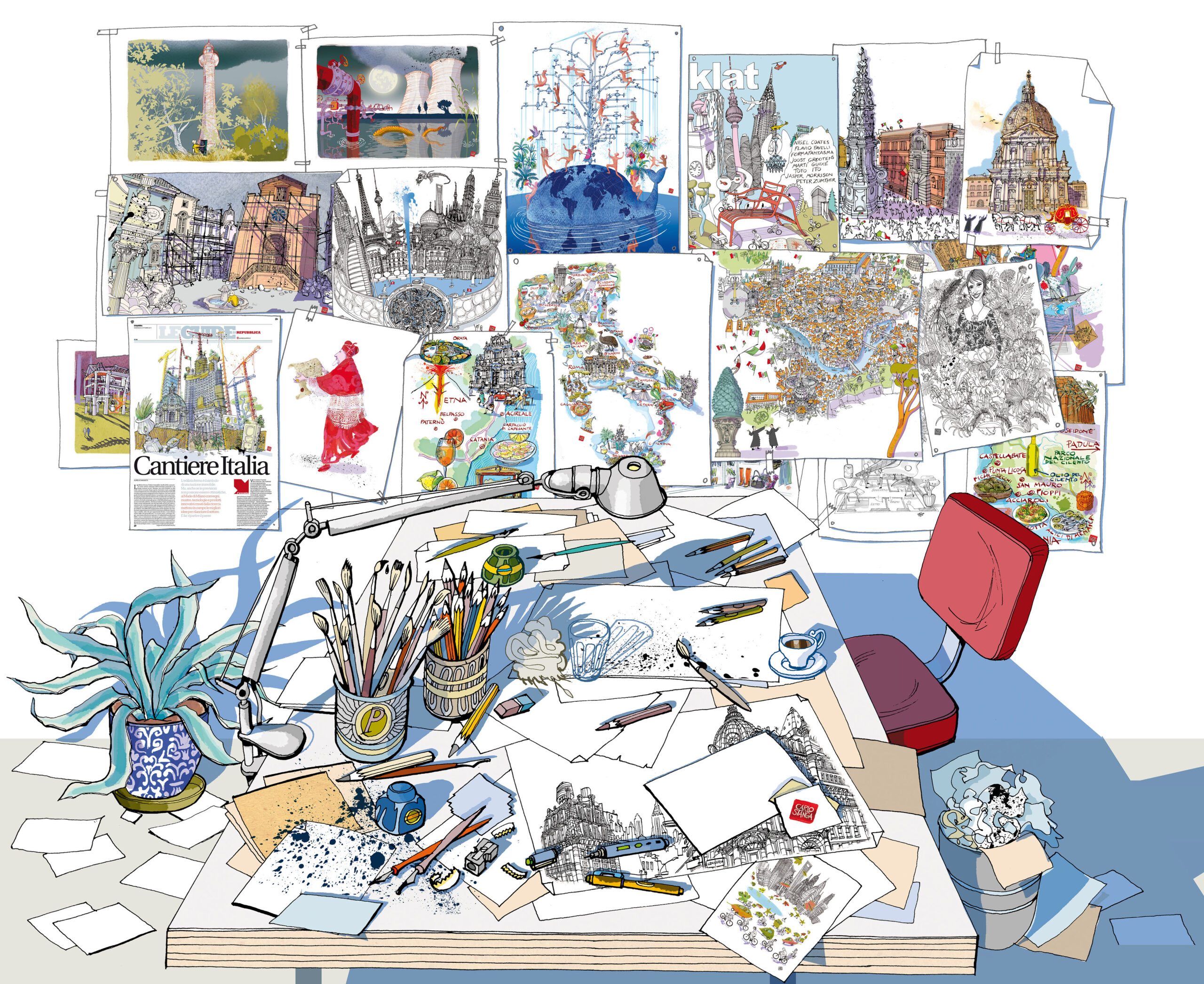
https://www.carlostanga.com/
Pedestrian Space: We love the concept of talking about city personalities – as your work is referenced as doing so here. How does this idea of city as a person or character emerge in your work?
Carlo: I developed the idea of thinking about cities as people just because I think we all have already this kind of thought, even though we are not aware of that. In fact to describe cities we normally use adjectives that are perfectly fitting to persons: an elegant city, a rich city, a poor city, a dirty city, a happy city, a busy city, a beautiful city, an ugly city, a violent city, a romantic city and so on. In addition a city has a childhood, an adolescence, a mature age and an old age. A city can also be killed and be dead, like Babylon and so on. So when I approach a city and try to figure out how this city is as a person, it is because my main goal, when I draw, is to find the real personality and identity of this urban-person.
In my illustrations you can find the colors, the shadows, the general atmosphere of that particular city concentreted in just 60 or 70 images, just like many portraits of looks, feelings and moments in the life of that town.
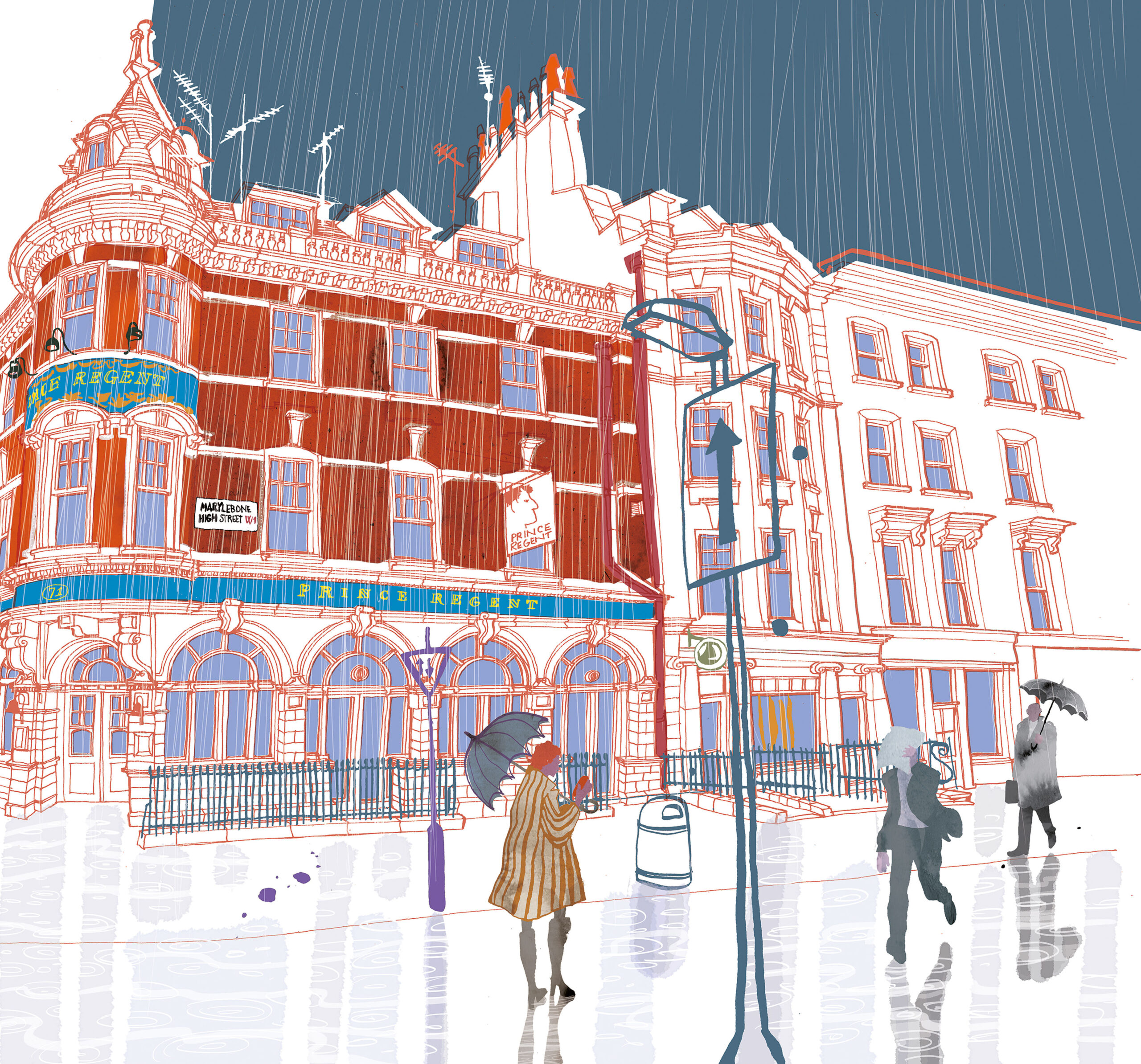
Pedestrian Space: If city is a character, who is Milano?
Carlo: Ahah, nice question. Well I imagine Milan as a middle age woman, very busy, elegant, sometimes too conservative and selfish, not particularly open minded compared to her European colleagues, but very willing to improve herself.
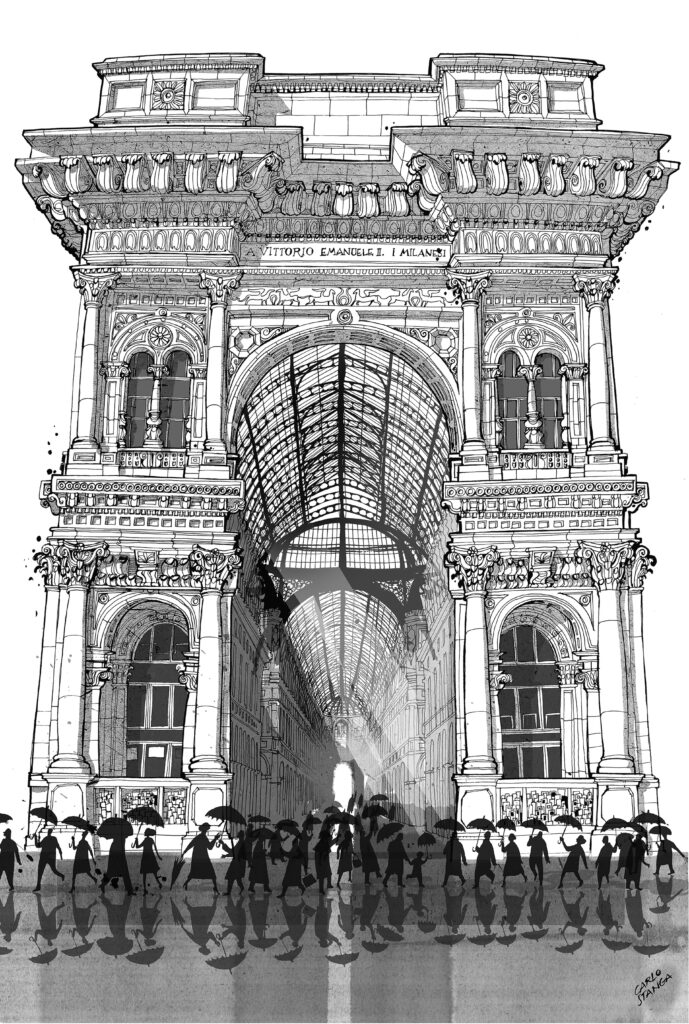
https://www.carlostanga.com/
Pedestrian Space: We love this work you did for the special edition manifesto of ABITARE dedicated to the City of Milano. Can you share more about the creation of this piece?
Carlo: I loved creating this work for Abitare, a historical architecture and design magazine. They asked me to draw a piece for the Salone del Mobile in Milan and I decided to focus more on the climate change issue, paying tribute to the exhibition “ Broken Nature” at the Triennale di Milano. In particular I decided to illustrate a flooded Piazza Duomo in a dreamy mood, with Italian iconic design pieces appearing in the middle of the catastrophe and a white whale, a symbol of Nature, coming out from the Galleria Vittorio Emanuele II, showing herself as the new future challenge. This piece is entitled “ Design Care”, wishing to solve the ecological problem throw a more aware and sustainable design practice.
I created this work in 2019 and now it seems to me prophetic of the pandemic age. The Piazza is full of water and is almost without people, just like in Corona time,, the whale looks like the break-in of an unexpected guest, the monster, Moby Dick, the virus. Sometimes the illustrations we do can assume a new meaning and come to a different life.
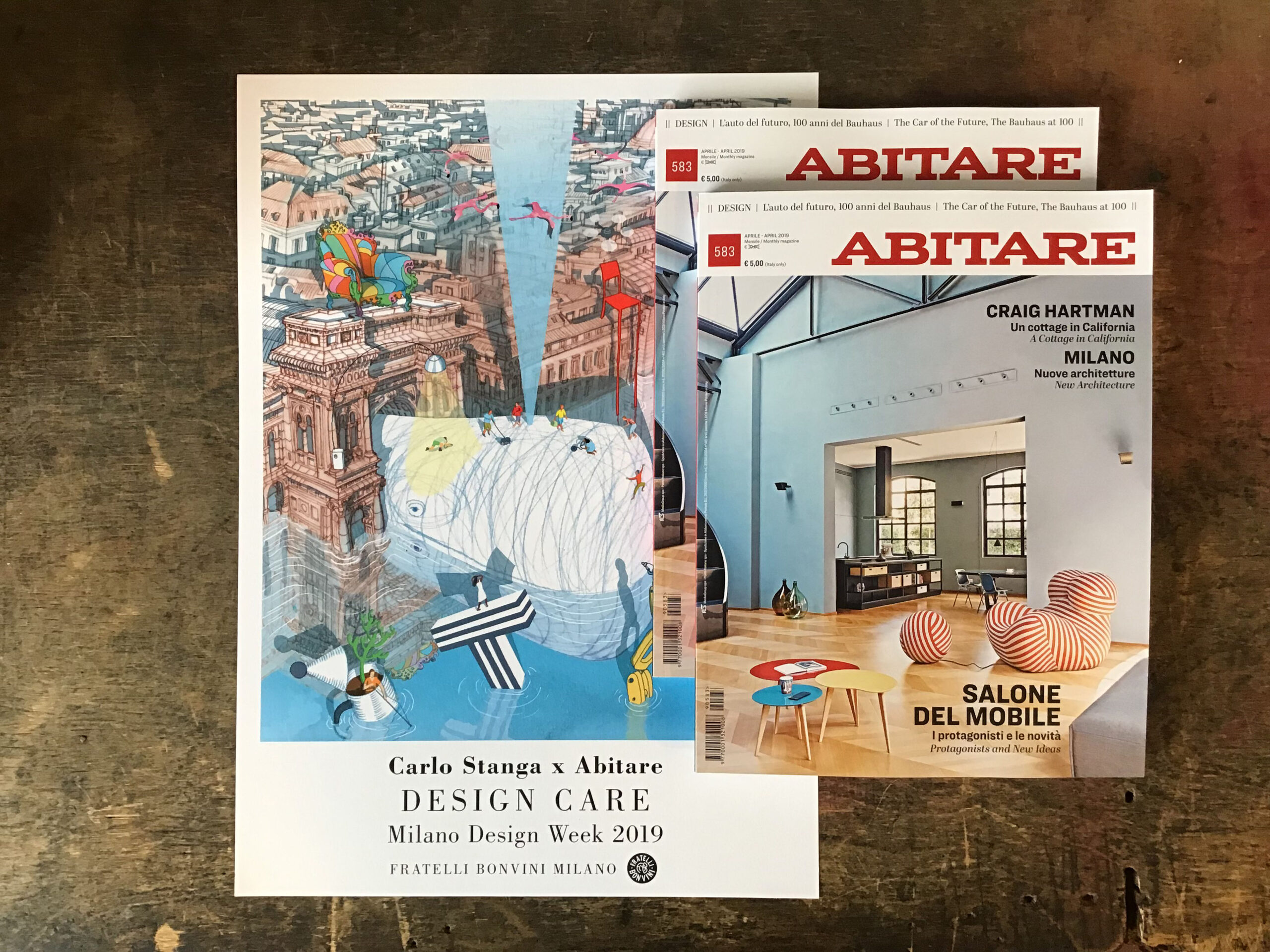
Pedestrian Space: If you were to do a series of European cities as people or characters, which cities would you choose to depict?
Carlo: I love so many cities. From Madrid to London, from Barcelona to Rome, Athens, Berlin, Amsterdam, so many. I think I could depict cities for a lifetime and beyond.
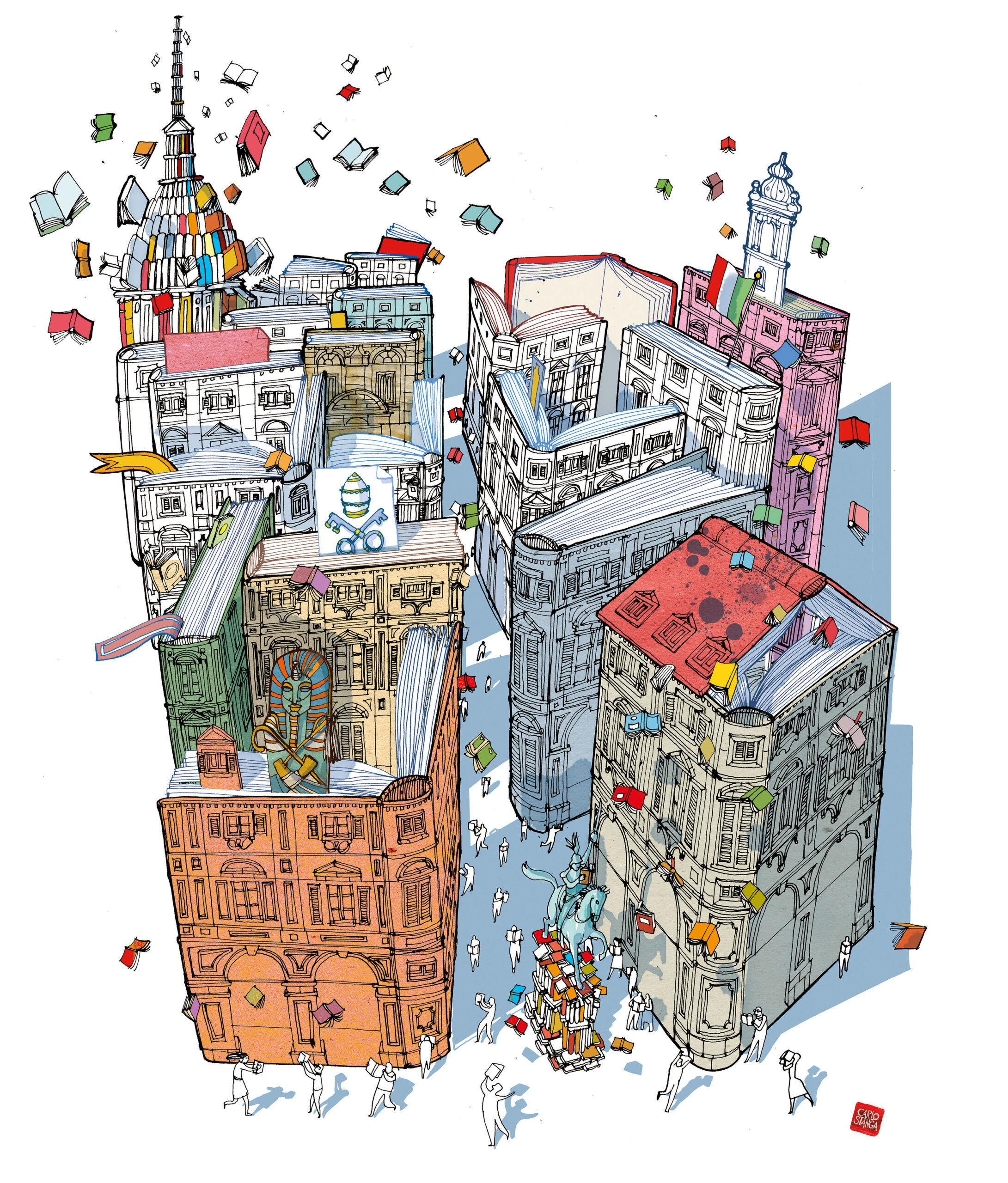
https://www.carlostanga.com/
Pedestrian Space: You in fact have an architectural illustration course with Domestika about depicting the city. Can you share more about this?
Carlo: Sure! I am very grateful to Domestika, the biggest art-educational platform in the world, for asking me to create a course. I decided simply to share my experience as an architectural illustration, by sharing my method. My main goal in this class is to inspire the students and help them to find out their real artistic identity and personality, to reach a unique style and be completely themselves without copying others.
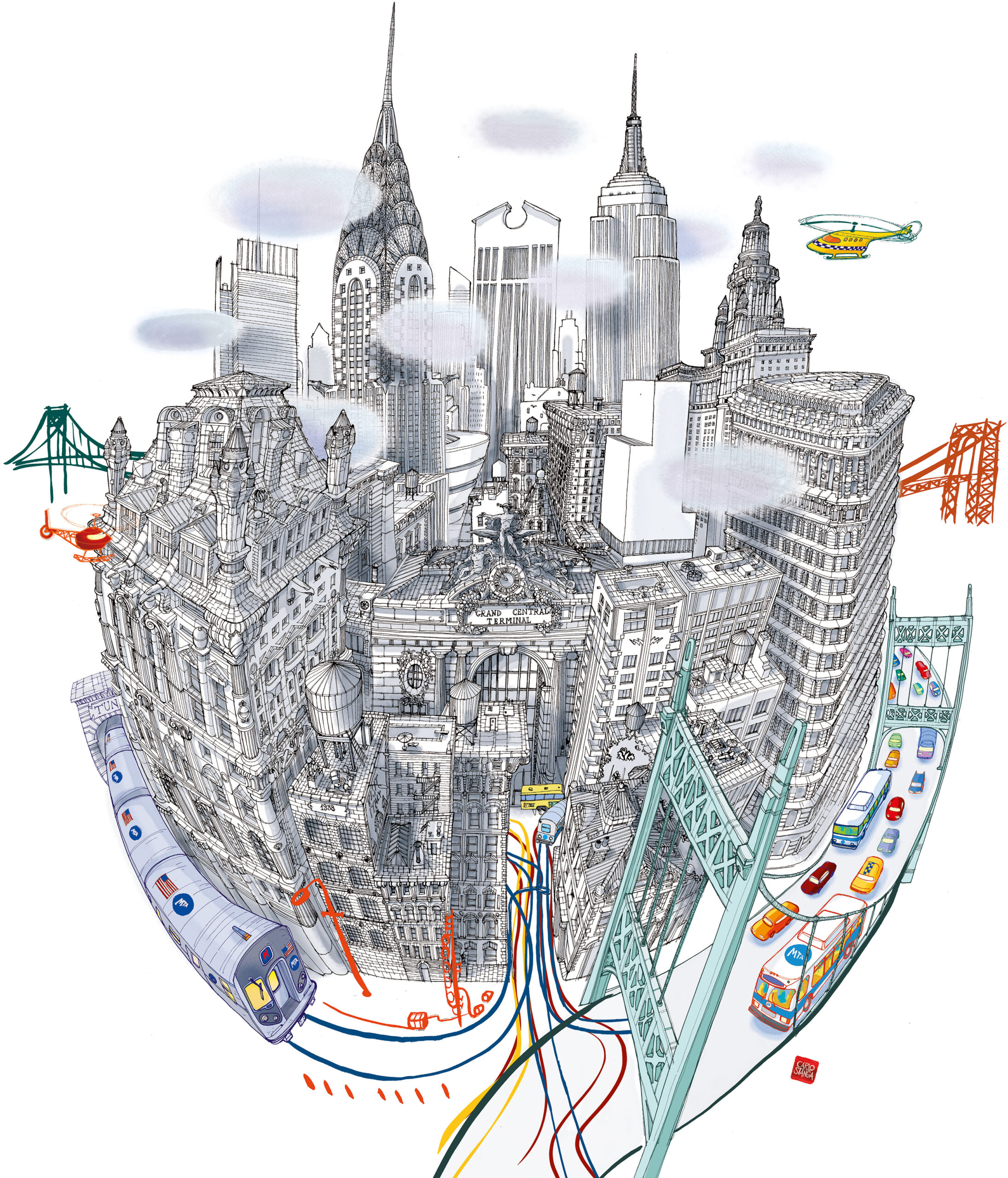
https://www.carlostanga.com/
Pedestrian Space: New York City features quite regularly in your work as well. What is your relationship with NYC and how has the city inspired and influenced your work?
Carlo: I work in the United States often and my illustration agents are in New York, so it was natural to have a strong relationship with this city that has always been so important for graphic design and illustration. My first memories about New York , as a child, are about the discovery of Saul Steinberg’s The New Yorker covers. This artist was my first influence and he is still my main inspiration. I love his lines, the ability to be so creative and evocative, minimalist yet complicated and rich. He studied at the Polytechnic of Milan and graduated in architecture just like me, following his main Daimon, his passion: the drawing, just like me. For me he was always a model, a reference and actually in my mind Saul Steinberg is New York and when I walk in Manhattan I have the feeling of being in one of his amazing drawings!
Pedestrian Space: What is the story of how you came to be living in Berlin now?
Carlo: I was always very attracted by the idea of living in a foreigner city. I needed to change my vision, my way to see the world. I was working as a free-lance architect and had work in Berlin. I fell in love with the city at first sight and I decided to live here. The greenery, the nature, the parks, canals, rivers and the space, together with an incredibly wide cultural offer, made me decide to stay here and 9 years later I am very happy.
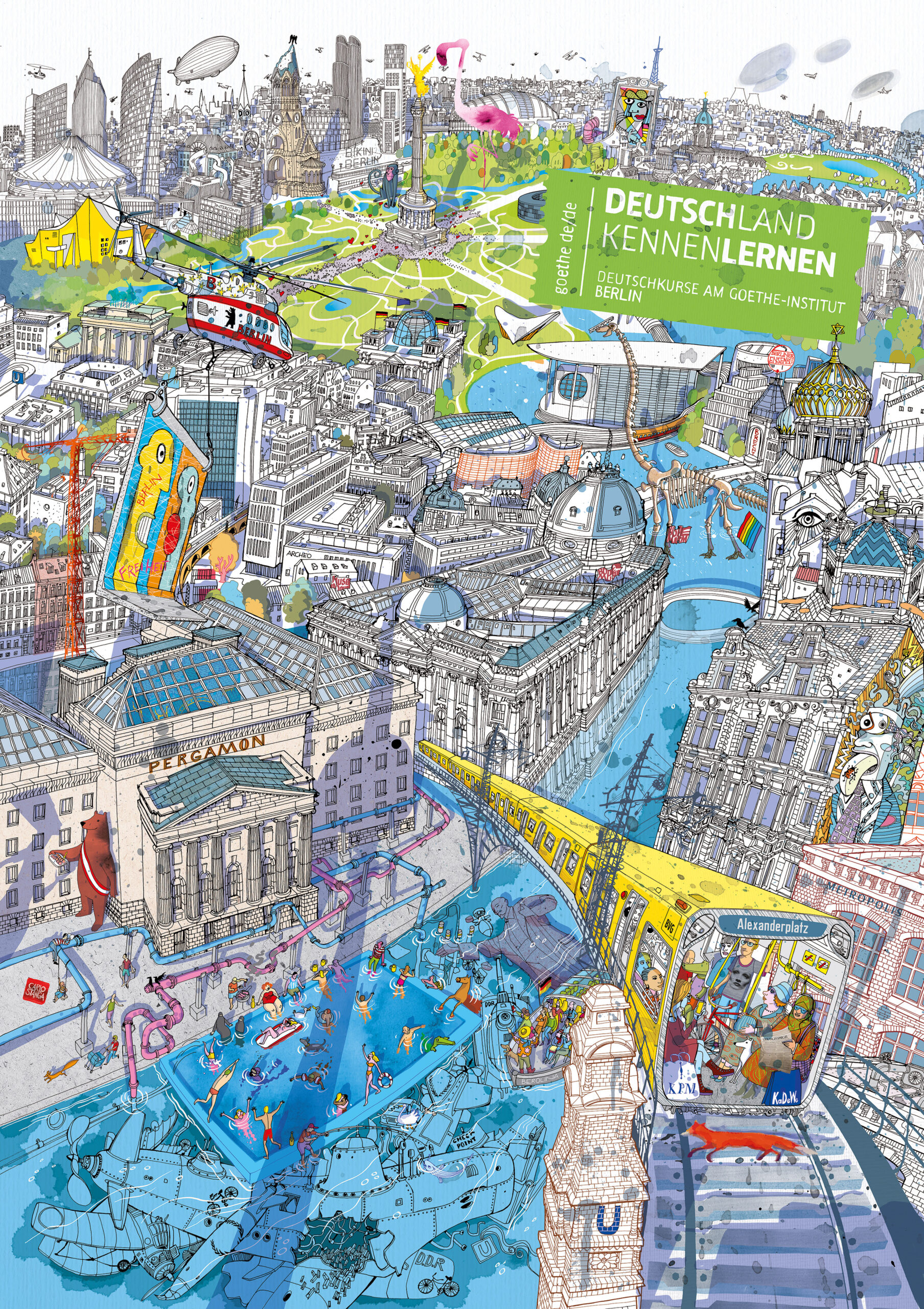
https://www.carlostanga.com/
Pedestrian Space: If Berlin was a character, who would she be?
Carlo: Berlin is a very special metropolis and well, if it was a character I imagine her as a colorful and exuberant transsexual, rather than simply a man or a woman, because of her multifaceted personality, her playful behavior and tolerant and open minded attitude.
Pedestrian Space: How do you move around Berlin and what is your favorite mode?
Carlo: Berlin is the biggest city of the European Union, about 50 kms large from west to east, despite this size it is very easy to move from a district to another because of its excellent transportation system, counting many subway lines and trains, as well as buses, car sharing, trams etc. Actually I prefer to use my bike, riding through more the 1.500 kms of bike lanes. Also walking of course is very important for me in order to discover the town in all its hidden and precious places. The quality of life is rising as soon as you walk or ride a bike. Berlin gave me the possibility to do this in a very green and alive environment. I am so relaxed and happy with walking in my home city, it provides me a special and always flowing inspiration for my artistic work!

Visit Carlo online at https://www.carlostanga.com
